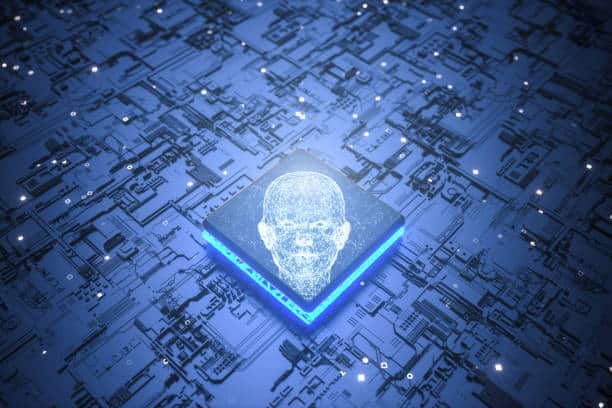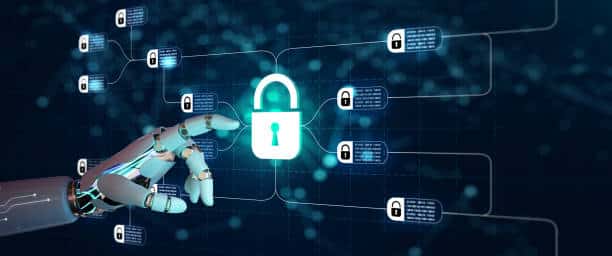Anthropogenic consciousness (simulated intelligence) has expanded beyond the boundaries of science fiction to become a modern technological arrangement used by many organizations today. Its rapid integration into different sectors, from medical services to finance, is changing the way we work with information and make decisions.
Our 2023 Flows research report, which looks at technology creators, leaders and representatives, found that 49% of respondents use AI and ML devices for business use. However, the delay surrounding these developments continues.
When asked what prevented their associations from further embracing computer-based AI/ML devices, 29% cited ethical and legal concerns, while 34% hailed security concerns.
With this development comes a pressing concern: the simulation of information security. As AI frameworks process massive amounts of individual data, the line between utility and disruption turns out to be gradually blurring.
What is AI protection?

The ethical collection, storage and use of personal information by AI systems is at the heart of AI privacy practices and concerns. It tends to the basic need to protect individual information privileges and goes hand in hand with classification as a simulated process of intelligence calculations and profiting from vast amounts of individual information. In an age where data is a valuable commodity, securing AI privacy requires striking a balance between technological progress and personal privacy.
Artificial Intelligence Information Collection Techniques and Security
Human-made information frameworks depend on a wealth of information to work on their calculations and results, using a range of variety strategies that can present critical security bets. The methods used to collect this data are often hidden from the people from whom the data is collected—such as customers—which can lead to privacy breaches that are difficult to detect or control.
Here are some strategies for simulated intelligence gathering that have security suggestions:
- Scraping the tissue. By automatically extracting data from websites, AI can gather a lot of information. While some of this information is public, web scraping can also pick up individual subtleties, possibly without the customer’s consent.
- Biometric information. Artificial intelligence (AI) systems that make use of biometric technologies such as fingerprints, facial recognition and others can violate an individual’s privacy by collecting personal, sensitive and irreplaceable data if compromised.
- IoT gadgets. Gadgets related to the Web of Things (IoT) provide man-made intelligence frameworks with continuous information from our homes, work environments and public spaces. This information can reveal the comfortable subtleties of our regular routines, creating a persistent stream of data about our tendencies and behaviors.
- Observing online entertainment. Human-made intelligence calculations can examine virtual entertainment action, capture segment data, inclines, and surprisingly, close to residence situations, often without the client’s express attention or consent.
The security implications of these processes are wide-ranging. They can cause unauthorized perception, blackmail and lack of mystery. As computer-based information developments become more programmed into everyday presence, ensuring that variety of data is immediate and downloadable and that individuals are in control of their own information ends up being dynamically fundamental.
Particular privacy issues of AI

According to information from Crunchbase, by 2023, more than 25% of interest in US start-ups has been directed towards organizations gaining hands-on experience in human intelligence. This rush of computer-based intelligence has provided remarkable abilities in information manipulation, examination, and foresight. In any case, information simulation presents security challenges that are complicated and complex, not quite the same as those presented by conventional information handling:
- Volume and variety of information. The risk of personal data exposure increases because AI systems are able to digest and analyze exponentially greater amounts of data than conventional systems.
- Preventive examination. Through pattern recognition and proactive display, simulated intelligence can interpret individual behaviors and inclinations, often without the unique’s information or consent. transparent decision-making Human-made intelligence calculations can arrive at choices that affect people’s lives without simple thought, making it inconvenient to monitor or test protection intrusions.
- Information security. The vast informational collections of simulated intelligence expected to work successfully are tempting concentrations for digital risks, raising the stakes of breaks that might think twice about protection.
- Nested slope. Without careful supervision, AI can retain existing biases in the information it cares about, causing biased results and breach of protection. These difficulties highlight the need for robust security assurance considerations in artificial intelligence. Matching the benefits of computer-based intelligence with the right to security requires careful planning, execution and management to prevent the misuse of individual information.
Key information protection simulation concerns for organizations

As organizations progressively integrate human intelligence into their operations or build AI frameworks for their customers to use, they face numerous security challenges that should be proactively addressed. Companies must carefully navigate the significant legal and ethical implications of these concerns, which have a significant impact on customer trust.
Combine and anonymize data
The use of anonymization methods can protect individual characters by removing identifiable data from the information indexes used by computer-based intelligence frameworks. This interaction involves customizing, encoding or eliminating individual identifiers, ensuring that information cannot be re-delivered to an individual.
Combined with anonymization, information clustering joins individual data of interest into larger datasets, which can be explored without revealing individual subtleties. These techniques reduce the bet of protection breaks by preventing the relationship of information with explicit individuals during AI examination.
conclusion
The Union of Human Intelligence and Information Security In this era of rapidly evolving computer-based intelligence, matching computer-based intelligence capability with information protection and security is a higher priority than at any time in recent memory.
By realizing these concerns and executing sustainable measures, business experts can limit the advantages of human-made intelligence while guaranteeing the protection and security of information. Keep in mind that the ultimate destiny of business in the era of human intelligence is not simply the adoption of innovation. It is associated with fostering a culture where growth and obligation coincide together as one.

